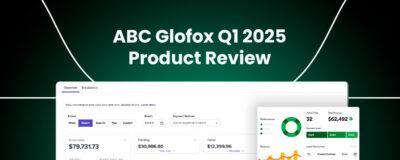Digital fitness has been one of the few success stories during the pandemic. It has allowed both large franchises and independent operators to keep their businesses going and retain a good percentage of their membership bases. And, outside the brick and mortar sector, digital-only companies such as Peloton, Strava, and more prominent tech players like Apple have gained significant market share.
The fear for fitness operators now is that fast-growing digital-only offerings have taken a firm hold of the market due to their convenience and ability to attract a mass audience.
Digital fitness should be neither a negative nor some all-encompassing revolution you need to get on board with or be left behind. Instead, it’s an innovation that has arrived quicker to the industry than previously expected and is an innovation that can benefit your brick and mortar business if the strategy is correct.
Live classes and on-demand cannot and will not ever replace the emotional connection you make with the members. What it can do is take its place in your overall offering, so the bond you build with your member in the real world translates over to the digital world. As Intelivideo CEO Adam Zeitsiff described on our podcast recently, “it becomes that omnichannel approach, and it’s a super unique fitness experience that only a local gym or studio operator can provide.”
The best way to help you figure out how to implement a digital fitness platform into your business is to go through what a digital fitness platform is, the benefits to your company, and explore some of the factors that will make your platform successful.
Skip ahead to:
- What is a digital fitness platform?
- What are the benefits of a digital fitness platform?
- What makes a digital fitness platform successful?
What is a digital fitness platform?
A digital fitness platform is an online space that hosts either live or on-demand fitness classes. Access to the workout platform is usually part of a membership package and is password protected. Some operators may allow a selection of the workouts to be freely available to the public as a marketing tool. Here are three different types of workout platforms used in the industry today.
Custom-built
A custom-built option is likely the most costly way to add a digital element to your business. For example, building your digital fitness platform would involve hiring an outside developer to build the platform to your specifications, integrating it into your fitness app and website.
The advantage of doing this is that the platform is yours and customized specifically to your brand. The disadvantage of going this direction would be the cost, and you would likely have to retain the developer to fix any technical issues.
SaaS
A SaaS (Software as a Service) platform would be a system you can sign up for to provide all the on-demand digital workout content. It also may offer the ability to live stream and upload your content to your app. SaaS services usually operate on a subscription basis, meaning you pay a monthly or yearly subscription to access the platform.
The advantage of using a SaaS provider is consistent quality and service at a much lower cost than a custom-built app or platform. One of the most prominent examples of this platform type is Intelivideo, which allows you to deliver a branded hybrid experience to your members.
Free to use
When fitness operators first went digital out of necessity, many turned to free streaming services such as Youtube, Zoom, Instagram Live, Facebook Live to allow their members to work out. Even major franchises like Barry’s Bootcamp went down this path in the beginning, streaming 20-minute bodyweight classes over Instagram Live.
Zoom has become the de facto live online class platform for most fitness operators and is relatively easy to use. However, a Youtube channel with private playlists just for members would be a cost-effective option for storing on-demand classes.
What are the benefits of a digital fitness platform?
As pointed out at the beginning of this article, the pivot to digital fitness responded to a rapidly forming and large-scale global crisis. Now, however, delivering workout classes online has become the norm, and we now are at a stage where it will play a significant role in the industry’s future. Fitness industry insights company Club Intel has found that 72% of fitness operators globally now offer a digital service, up 29% in 2019.
Looking past the obvious need to survive as a business, explaining the key benefits of a digital fitness platform is essential. So let’s take a closer look at what these benefits are and what they possibly mean for the future success of your business.
Greater convenience for the member
At-home fitness is nothing new for the consumer. The VHS workout was the norm for looking after wellbeing from the 1980s onward, and after that, companies like Beachbody became dominant market players. In contrast, the brick-and-mortar gym industries, specifically the boutique sector, focus on energy and community studio experience. Admittedly though, the potential downside of the brick and mortar is the lack of convenience. Classes are timetabled at a specific time, and in some cases, if the brand is popular, members can book classes up fully at popular times.
The Customer
Engagement Playbook
for Your Fitness
Business
Discover more On the other hand, there is a level of convenience with digital fitness that suits certain types of members more than others. For example, if the fitness business provides an on-demand workout package that can be accessed anytime, anywhere, it allows members to work out around their schedule. As a result, the consumer is now driving the market more so than the operator. This analysis is featured in an extensive article we previously wrote on running an online fitness studio.
Future Proofs The Business
Running a business isn’t easy, and the pandemic and the subsequent lockdowns, as a result, have tested the resolve of gym owners around the world. The challenge of making a business successful has been well documented. Unfortunately, there are hundreds of failed companies whose stories never see the light of day for every inspiring success story. The pandemic has reinforced the need to have strategies in place to take on any unforeseen challenges that could easily add you to the long list of business failures.
The one thing that saved many sectors of the economy was the ability to move their services entirely online. This included fitness and, while some businesses were hesitant initially, running an online offering became the norm for more than a year. Of course, when economies fully reopen, they may not keep their digital platforms operating at the same capacity. Still, there will be a need to keep a functional virtual fitness platform ready to go in case a Covid-19 like situation happens again.
A New Revenue Stream for Your Business
While your primary means of generating revenue for your business is through memberships, it’s a good strategy to develop other revenue streams for your business. Not only does this bring in a new cash flow, but it also enhances the value of what you offer your current members. The more value you deliver, the better able you are to price your memberships in a way that will make the business more profitable.
The digital side of your business may not play as prominent a role when your business opens back up, but it still can play an important role. The advantage of live or on-demand classes is that you can reach people far beyond your local area. Many fitness operators have connected with a new base of members during lockdown who may stay with the online service in the future. For example, check out how Australia-based Glofox customers Uber Shape reached people in places like the US and Abu Dhabi with their online offering.
What makes a digital fitness platform successful?
To make a fitness platform successful, you need to do a few things. First, at a high level, a strategy needs to be formulated that drives every other element of the fitness platform. The strategy includes features such as programming, production value, and specialized staff members. Let’s take a look at all these areas, starting with the strategy.
A well thought out strategy
67% of business leaders believe that strategic plans fail, according to this article by Inc. Does this mean that the strategy should be fired in the bin? Not exactly, but you need to think about the strategy differently. In the same article, Mark Johnson, writer of Lead From the Future, says business leaders should envision what the outcome should look like and then work backward from that to develop the strategy.
Taking this into consideration, really think about how a successful version of your fitness platform will look. Listen to a previous interview with digital fitness expert Will Brereton to give you an idea of how this platform should look. In the episode, Will talks about the steps you need to take to have a well-thought-out strategy for your digital fitness platform. He makes a key point about any digital fitness platform you launch: you need to define who you are appealing to first.
Getting the programming right
One of the common mistakes that gym owners make is that they feel they need to be all things to all members. Unfortunately, this mistake usually results in a clunky and confusing workout schedule that doesn’t appeal to everyone. So instead, the aim should be to keep your programming simple – and it goes back to what we just mentioned about defining who you want to appeal to first.
Will Brereton gives similar advice in his podcast interview with us. According to him, the key is to keep your programming simple. Members can get overwhelmed by the number of choices they have. The actual play is to have a small selection of class types that suit the kind of member you are appealing to. Then work to ensure that they are the best quality possible.
Practical production value
When we think about video and streaming content, there is a perception that it must be the perfect quality before you can even consider releasing it to the world. However, this way of thinking can stop you from doing anything worthwhile. When creating digital content for your fitness platform, you need to be realistic and practical about what you are creating.
Barry and Shay Kostabi from Fitness Career Mastery shared some critical advice that echoes Will Brereton. Try and maintain a good standard of production – but don’t go crazy with it. The vital thing to remember is that the workout is disposable as members will only view it a couple of times. Get the lightning and sound correct above all else – you want the member to see clearly what the exercises are and hear the instructions you are giving them.
Camera trained instructors
Although, on the surface, there seems to be no difference between in-studio instructors and on-camera instructors, there are a few things that separate the two roles. As retention expert Dr. Paul Bedford noted on an episode of our podcast, the difference between in-studio and on-camera instructors is like the difference between a film actor and a stage actor.
Two people who are experts in training fitness instructors for the camera are Barry and Shay Kostabi. According to them, one of the essential things an instructor needs to do is connect with every class member. A good piece of advice from Shay is to imagine there is only one person on the other side of the call that you deeply care about. Connect with them, focus your energy on them and think about it more like personal training than teaching an entire class. Please take a look at the excellent course they do here.
In summary
The fitness industry has undoubtedly changed over the past year, and digital fitness is here to stay. However, this shouldn’t alarm brick and mortar operators as the technology is out there to reach members outside the studio and in. You have to keep top of mind that members value personal connection in their workout, and you need to ensure that happens with your digital offering.















